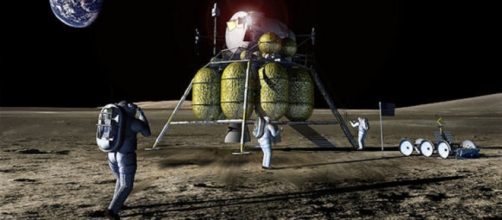When President trump signed the executive order recreating the National Space Council, the question arose when it would start meeting and formulating Space Policy. Greg Autry, the former NASA liaison, suggested that first meeting will happen “very shortly” during a speech at the Space Technology and Investment Forum in San Francisco, according to Space News. The Space Council will focus on defense and the economy, but will also start a return to the moon program based on commercial partnerships.
The Space Council to coordinate space policy
The primary purpose of the Space Council is to ensure that the different parts of the government are on the same page where space policy is concerned.
The Trump administration is keen to prevent NASA, the Defense Department, the National Reconnaissance Office and Congress from going in different directions. The singular goal will be to create a viable space economy. That means that space exploration programs will not be goals in and of themselves but will serve the higher economic imperative.
Return to the moon
The center point of a space program in the Trump presidency will be a return to the moon using commercial partnerships. The idea is that sending astronauts back to the lunar surface will not be just to do science, raise the flag, and pose for the TV cameras as was the case during Apollo, but rather to incorporate the moon into the world’s economy.
The moon is an excellent source of a number of useful raw materials that can be used to make products in space. Lots of water exists, especially at the poles, that could be refined into rocket fuel. Helium 3, a possible fuel for future fusion power plants, exists in some abundance. Ready access to these materials would be of great benefit to the nation or likely coalition of nations that achieves it first.
Part of the architecture for a return to the moon is already under development. NASA’s Orion and Space Launch System. SpaceX’s Dragon and Falcon Heavy, as well as systems being built by Blue Origin and ULA, can be part of a return to the moon. The other two components will be habitats and landers that can be developed commercially, just like the crewed Dragon and the Boeing Starliner are as part of the commercial crew program.
A number of companies, such as Moon Express and Astrobotic, are already developing small lunar landers for business operations on the lunar surface. The next step is to start a new competition program to build landers that can carry astronauts back to the moon. Add habitats and other surface infrastructure, and the decades-long dream of returning to the moon becomes a reality at last.


